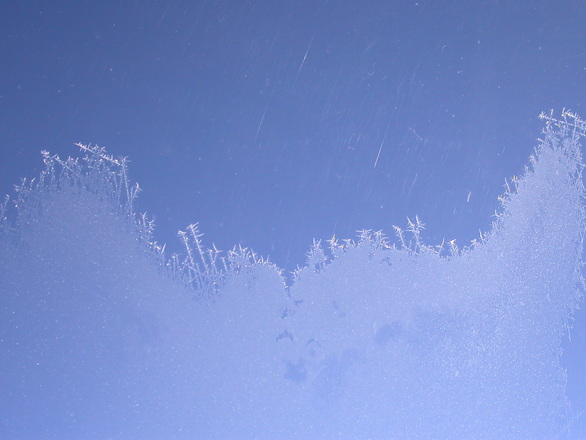Snowflakes and Crystallography
People in northern latitudes are usually well acquainted with snow, whether the Rocky Mountains, Washington, Michigan, New York, Alberta, Siberia, or wherever. We've seen it coming down hard and heavy, with heaps of it making things downright unsafe to head out to work, especially late in January. Turn this upside down, and areas in the southern hemisphere get snow, just ask the penguins and people in some parts of Australia, for instance (at the right time of year). To see actual crystals is something we may not stop to ponder, but individual snow flakes are quite a wonder.
Studying individual snowflakes led to the field of crystallography. Scientists are puzzled as to why water molecules are programmed to have six sides, and why there are over eighty basic types of snow crystals. What does this have to do with evolution? In a way, not a whole lot, because there is no organized complexity. But an evolutionary universe makes science impossible, since there is no reason for consistency in the laws of science — even the snow crystals testify to this.
 |
| Image credit: FreeImages / "Lufthansa Snowflakes 1 / Harpreet Padam |
Cloaked in the mid-winter darkness, John quickly made his way across the Charles Bridge to the newer residential section of town. His destination was on the opposite side of the river from downtown Prague and the castle. He was running late for the New Year’s Eve party. To make things worse, the shops were closed where he might have purchased a gift for the host, his patron who had paid for his scientific research over the past year.To chill out and read the rest, click on "Snowflakes—The Patron’s Gift".
As he passed under one of the lamps on the bridge, he noticed snow had begun falling lightly. Small, individual snow crystals were collecting on the dark fleece of his jacket. He stopped abruptly and watched with fascination as one geometric shape after another fell onto the arm of his coat. Their designs glowed brilliantly in the flickering light from the lamp above. Here was a small hexagon; there a featherlike pattern; a third, the shape of a star. Yet each crystal had six corners.
Never before had John taken the time to investigate individual snow crystals. Normally in snowstorms a dozen or more crystals would fall jumbled together in a large snowflake so he couldn’t discern the individual crystals. But tonight they fell individually. The air was probably so cold and the snow falling so lightly that they didn’t clump together. As John studied the various shapes and sizes, an idea began to form—he would explain why snow crystals all had six corners and present his thoughts to his patron as a gift!